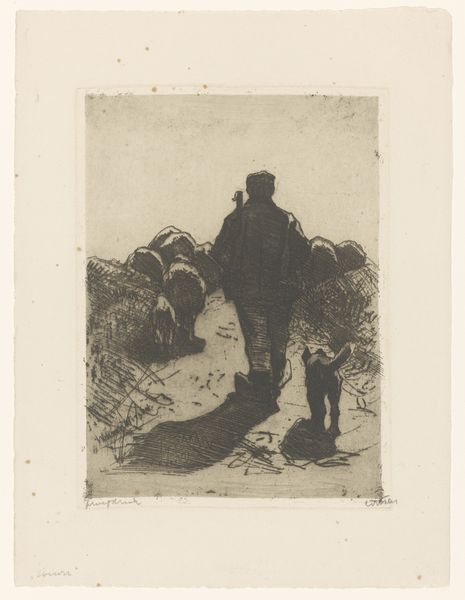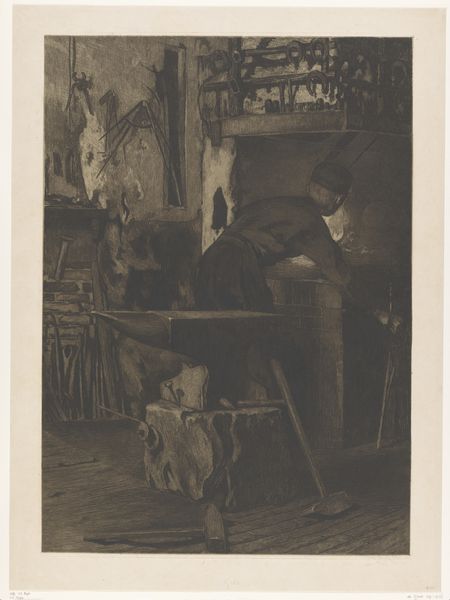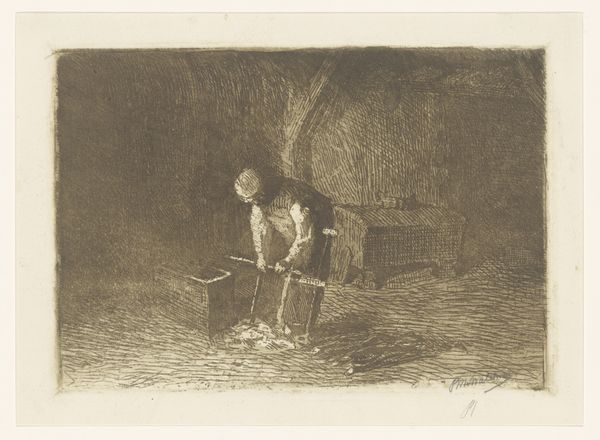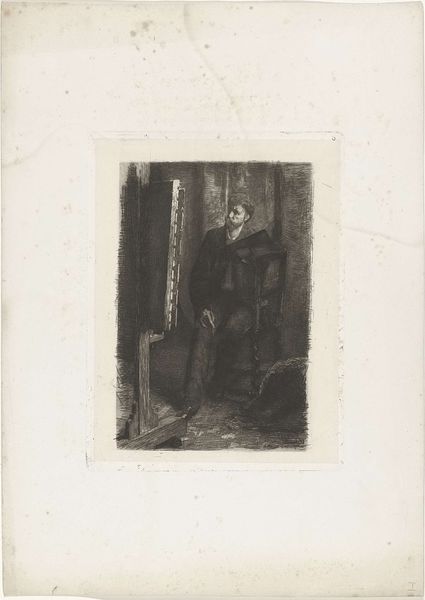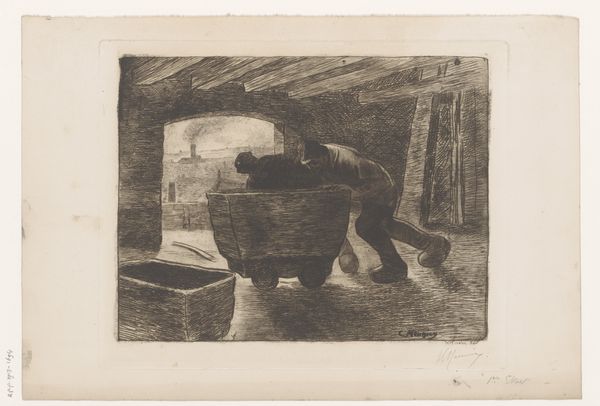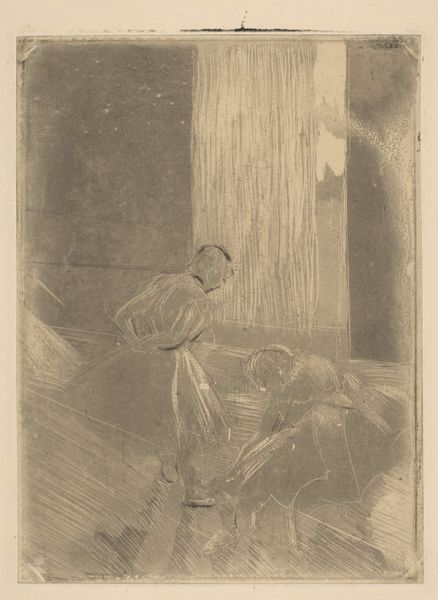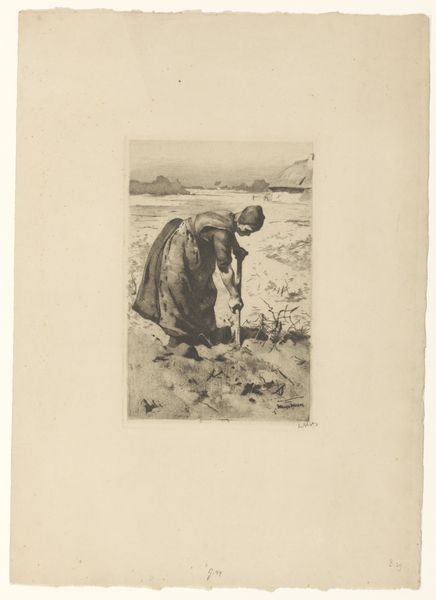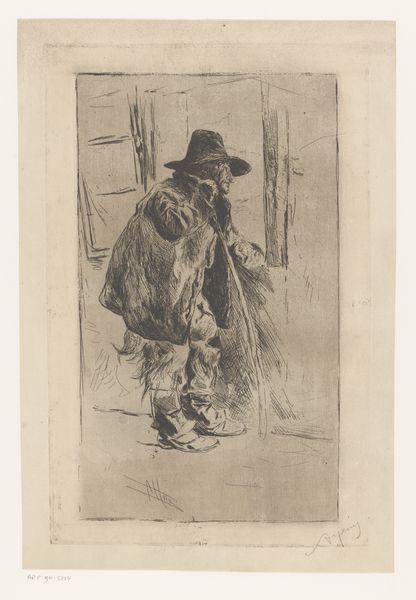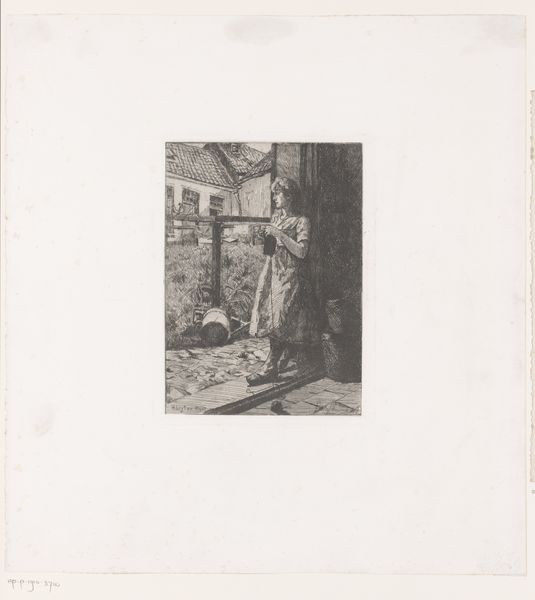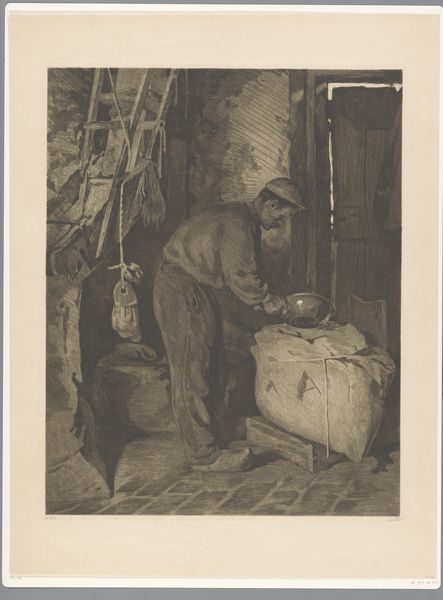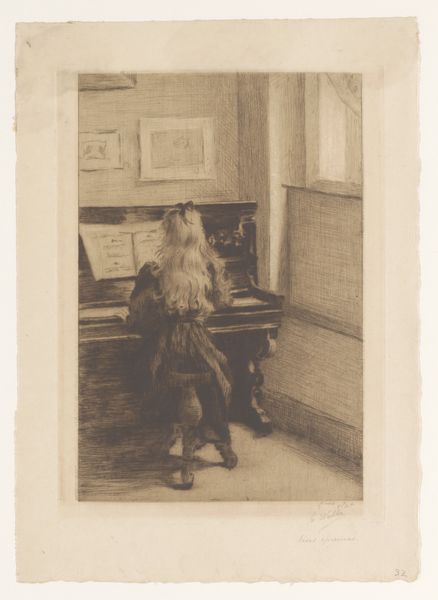
drawing, print, etching
#
drawing
# print
#
impressionism
#
etching
#
landscape
#
genre-painting
#
realism
Dimensions: height 256 mm, width 179 mm
Copyright: Rijks Museum: Open Domain
Editor: Here we have "Man die aan het wannen is," or "Man Winnowing," an etching by Willem Witsen, from around 1888. It feels quite somber and grainy. What jumps out at you about it? Curator: The immediate resonance is in the universal theme of labor. The repetitive act of winnowing – separating grain from chaff – has been a symbol of agricultural life for centuries, imbued with notions of both sustenance and hardship. The low-key palette is significant, as it mirrors the drudgery inherent in such work, something honest and raw. Don't you think so? Editor: Absolutely, that makes sense. The figure is so engrossed in the winnowing, there is a sense of isolation. I almost feel like he blends into the surrounding textures. Curator: Note how Witsen uses etching to capture the texture of the rural landscape – the rough wall, the damp earth. What feelings are stirred in you by the tree behind the wall? Is it barrenness or potential? Editor: Hmmm, it adds a certain vulnerability... reminding me of the fragility of life in general, or maybe the precarity of existence for the working class at the time. Curator: Precisely. It makes you ponder the role of work itself in our culture and individual lives, doesn't it? It is both necessary and, here, appears deeply personal. How does the work become a defining part of the person's identity? That idea continues to echo through art today. Editor: That's true; there's something almost timeless about it, even though it's very much of its time. It has made me consider that images have embedded cultural meaning beyond initial representation. Curator: Exactly! We're not just looking at an image, we're participating in a conversation that spans centuries, as artists use visual symbols to address these ideas of humanity across generations.
Comments
No comments
Be the first to comment and join the conversation on the ultimate creative platform.

